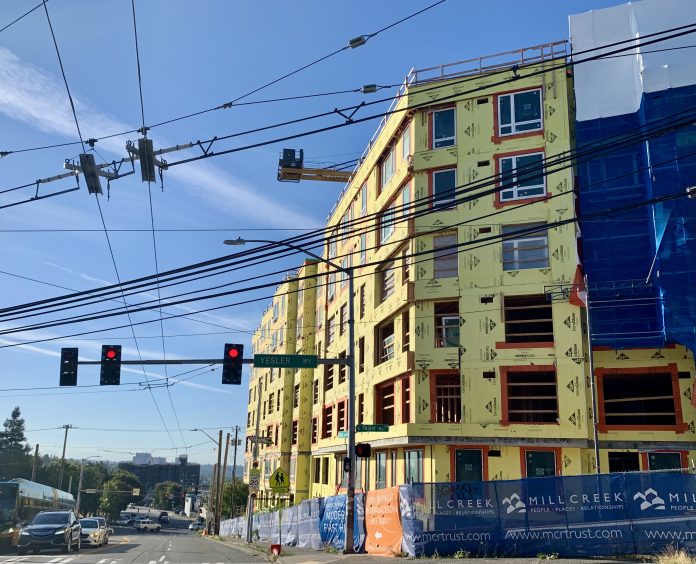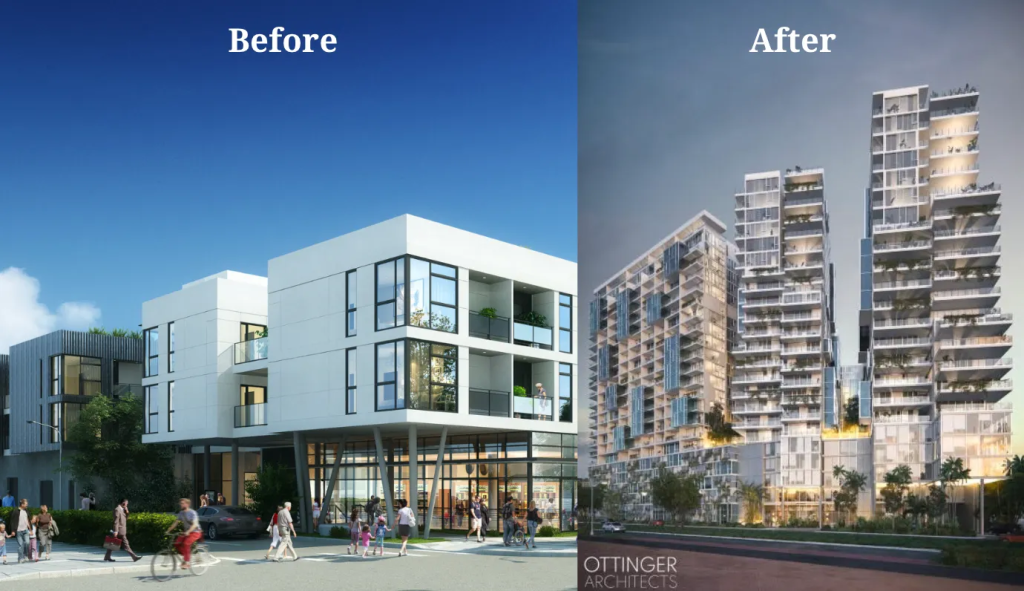
Sometimes there is a concept that pops up out of the blue that sounds like solution to so many problems. Among housing advocates in recent months, that idea has been the builder’s remedy.
The builder’s remedy is a California law that allows developers to bypass local zoning when the jurisdiction is not compliant with state housing requirements. California requires jurisdictions exercising zoning authority to include a housing element in their comprehensive plans. If that housing element doesn’t plan for the city’s fair share of housing in the region, the city forfeits their chance to deny affordable developments.
The builder’s remedy was added to state law in 1990 as part of a move to incentivize affordable housing. Technically, the law is written in reverse. A jurisdiction shall not disapprove an affordable housing development project unless the city can show it is surpassing its share of affordable housing as part of a compliant housing element, or that the construction will cause a verifiable, direct and unavoidable danger to health and safety. (Not shadows or brick patterns.) So if the city doesn’t have a compliant housing element, it can’t make that showing, and the builder can start digging. Thus it’s the builder’s remedy because they’re holding all the cards.
Not any project can go up, as there are requirements for the affordability of the units. Projects that qualify for the builder’s remedy must include at least 20% set aside for below market-rate housing, or are 100% moderate-rate projects. Those levels vary across California, but the rate in Los Angeles for affordable rent among very low income households was $1,040 a month for a single person and $1,490 for a family of four.
Santa Monica became the crucible for the use of the builder’s remedy in October 2022 when a developer named NMS Properties started filing preliminary approvals under the state law. The city spent several years dithering over whether conformance with the state’s housing element requirements would result in real ramifications. Turns out they would. While Santa Monica recently came into compliance with the housing element, there are some 16 projects with over 4,500 housing units that secured their approvals under the builder’s remedy. The hundreds of new affordable units that would not have been created otherwise are being called a “real time experiment.”

Just like cities in Washington are preparing to complete new comprehensive plans, California municipalities are updating their planning documents. This is bringing the housing elements to the forefront as some 234 of the state’s 448 applicable jurisdictions are not in compliance. The Campaign for Fair Housing Elements has some interactive maps tracking both the non-compliant jurisdictions and the 44 builder’s remedy projects clustering around the San Francisco Bay and the Southern California waterfront.
Would it work in Washington? As appealing as it sounds to really stick it to the most segregationist cities, there are a couple reasons why a builder’s element may not be feasible for the Evergreen State. First, the largest California cities are in compliance with the housing element. So the impact is really on smaller towns, and thus minimized by both space and capacity. That would likely be the case here.
Second, it’s an old tool that has just gotten teeth as California’s housing crisis got worse. As we have seen in the legislative process this year, housing bills don’t gain authority as they work through Olympia. They get stripped and whittled away. Any builder’s remedy is likely to be quite a few years out, and probably quite limited at first.
Mostly, the builder’s remedy relies on the California Department of Housing and Community Development deeming a jurisdiction’s housing element has not complied with legislated requirements. In Washington, comprehensive plan approvals are divided between the state Department of Commerce and the local council of governments like Puget Sound Regional Council (PSRC). To their credit, Commerce is very collaborative in their work to bring jurisdictions into compliance with comprehensive plan requirements. PSRC is transportation-focused and composed of the elected officials in other jurisdictions who spend a lot of time arguing for local control. It is hard to see either organization administratively undermining the zoning of a member jurisdiction.
So, for the time being, the state of Washington will rely on the newly passed housing bills from legislature and the strength of this cycle of updated comprehensive plans. While not perfect, they do offer the potential for making some impact on the region’s housing backlog. We’ll have to see if they are a remedy or a further symptom.
Ray Dubicki is a stay-at-home dad and parent-on-call for taking care of general school and neighborhood tasks around Ballard. This lets him see how urbanism works (or doesn’t) during the hours most people are locked in their office. He is an attorney and urbanist by training, with soup-to-nuts planning experience from code enforcement to university development to writing zoning ordinances. He enjoys using PowerPoint, but only because it’s no longer a weekly obligation.

